A really common mushroom that doesn’t stand out on its own flavour wise, but can be used in dishes with other mushrooms.
Home / Mushroom Guide /
Common Puffball
Common Puffball
| Mushroom Type | |
| Common Names |
Common Puffball (EN), Devils Snuffbox, Wolf Farts, Coden Fwg Gyffredin (CY), Purchawka Chropowata (PL), Bimbós Pöfeteg (HU) |
| Scientific Name |
Lycoperdon perlatum |
| Season Start |
Jul |
| Season End |
Nov |
| Average Mushroom height (CM) |
8 |
| Average Cap width (CM) |
5 |
Please note that each and every mushroom you come across may vary in appearance to these photos.
Fruiting Body
Starting spherical becoming slightly flattened or club-shaped. White turning cream to brown with small pyramid shaped warts, which when rubbed off leave a net-like pattern. Darker umbo-like top which opens to release the spores.
Stem
Has a white stem-like growth under the main fruiting body which is tapered or club-like and covered in small pyramid-like warts.
Habitat
Mixed woodland, pasture, commons and heaths. Can grow individually but usually in groups with the chance of finding more nearby.
Possible Confusion
Can be confused with very young Amanitas, pictured are Death Cap ‘eggs’, so the mushrooms should be sliced vertically, the stem and cap of the Amanita will be obvious within an Amanita egg, a puffball should be pure white and spongy inside.
Some of the Scleroderma species, but the tough skin and flesh and dark interior of the Earthballs should help avoid confusion.
The Stinkhorn (Phallus impudicus), starts as a Puffball like ‘egg’ but has jelly and a small mushroom inside.
Other Puffballs but as long as they are white and spongy throughout they will not be harmful.
Spore Print
Olive/brown. Globose with fine warts.
Taste / Smell
Mild, can be a bit ‘spongy’ in texture. Must be eaten while the flesh is still white throughout.
Frequency
Very common and widespread.
Other Facts
There are various different Lycoperdons which look similar and are all edible as long as they are white on the inside and out, but care should be taken to save possible confusion with Scleroderma species.
Like the giant puffball the spores can be used as a stiptic so staunch blood flow or ‘puffed’ onto burns to help with the healing.
However, if the spores are inhaled they can cause the lung disease Lycoperdonosis, so care should be taken when handling mature specimens.
In March 2025 the IUCN (International Union for Conservation of Nature) added 1000 fungal species to the IUCN Red List of Threatened Species. The IUCN (Global) Conservation Status of Common Puffball (Lycoperdon perlatum) is: LC – Least Concern, with stable population. For more information, see on the following link.



 (50 votes, average: 3.46 out of 5)
(50 votes, average: 3.46 out of 5)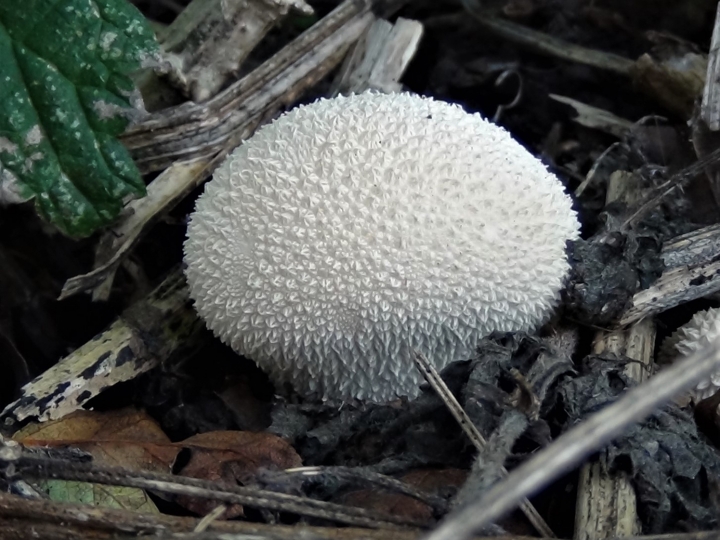
















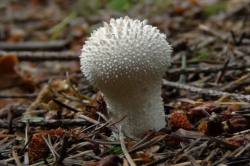

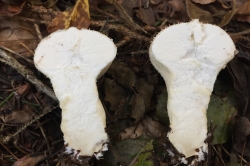
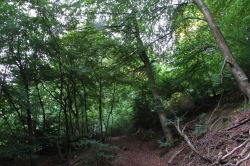
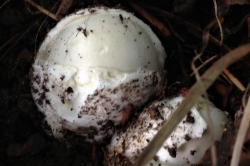
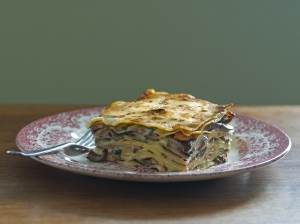
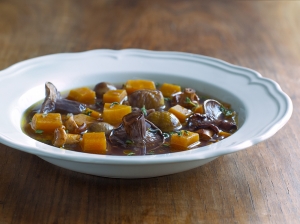

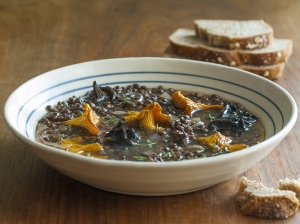
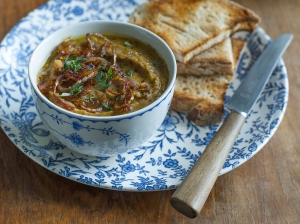
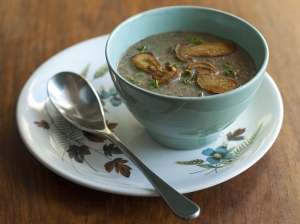






Leave a Reply